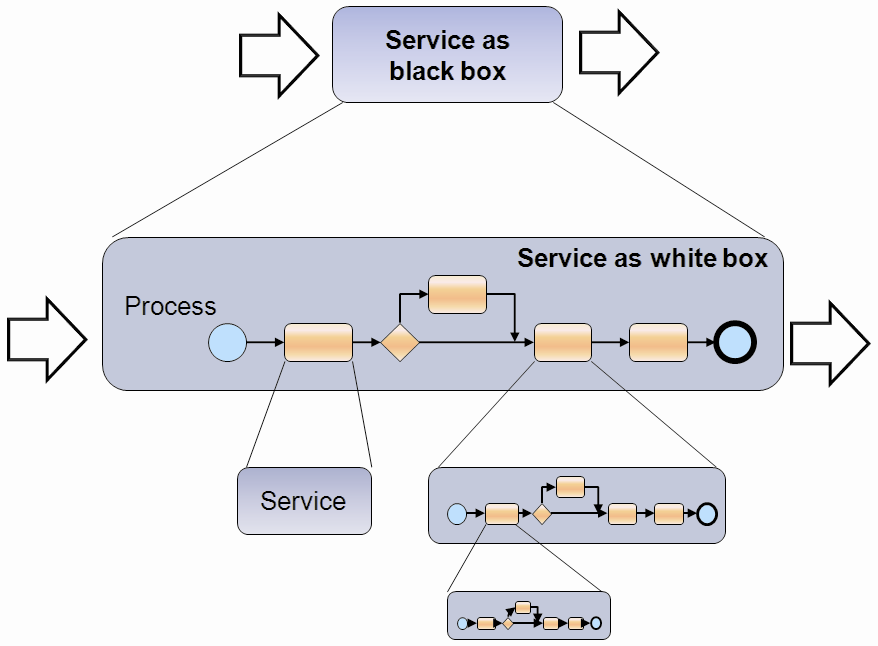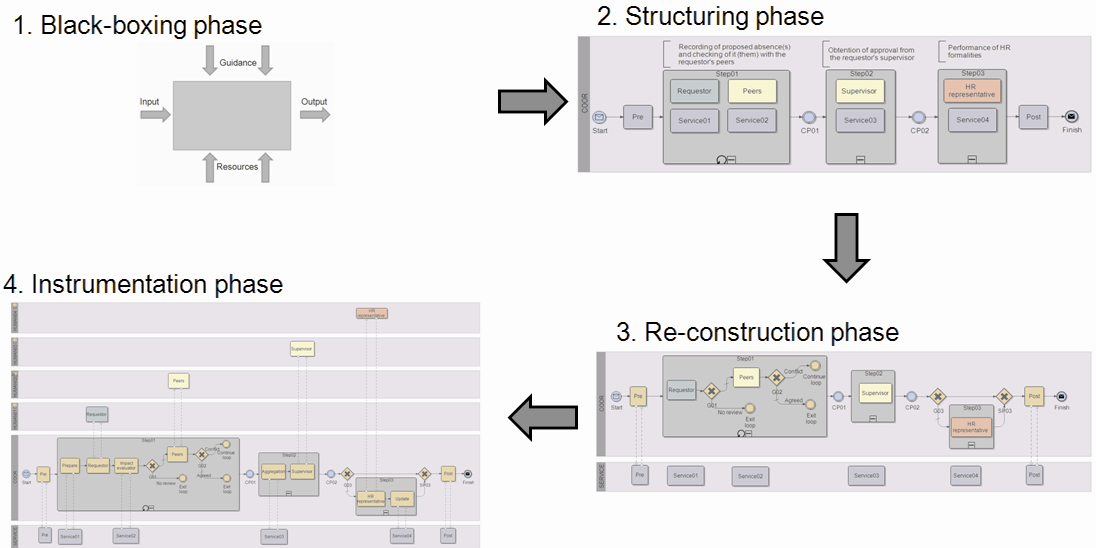<discussion ref="
http://www.linkedin.com/groupAnswers?viewQuestionAndAnswers=&gid=2087324&discussionID=11857025&sik=1263569046293&trk=ug_qa_q&goback=.anh_2087324.ana_2087324_1263569046293_3_1" />
Although this post didn't solicit answers I use these questions as a very good first step in understanding BPM. Some answers are very brief because they are based on my book “Improving enterprise business process management systems” – see
www.samarin.biz/book
In those answers I separate explicitly three concepts often mixed under the abbreviation “BPM”
1. BPM as management discipline is "manage enterprise by processes".
2. [Enterprise] BPM system (portfolio of the business processes as well as the practices and tools for governing the design, execution and evolution of this portfolio) which DOES manage processes within an enterprise on their full lifecycle.
3. A BPM suite (software product) which may help in the implementation of an enterprise BPM system.
>Theme A: Creating a shared understanding resulting in practical action
>1. How would my organisation be different if we implemented process-based management?
Use of BPM is not is not about how to make your organisation products/services better, different or more attractive for the market – this is for you to decide. What the right use of BPM can offer is to help you reduce the overheads in doing so – your flexible BPM system will become an enabler for your business innovations.
>2. What is the link between organisational strategy and business process management?
BPM disciple will help you to manage better your organization – implementation of strategy will be more straightforward because of explicit and executable business process and flexible BPM systems. Desired TO-BE organization can be modelled and its behavior can be simulated to validate expected performance.
>3. How do I create exciting BPM visions to lead to entire new process visions for my organisation?
>4. What are the compelling reasons for my organisation to adopt process-based management?
>5. How can we capture executive attention and transform it into commitment?
>6. Why should my organisation invest now in developing a process management capability?
>7. How can we develop a critical mass of people interested in BPM?
>8. Why should our day-to-day operational managers care about process management?
>9. How can we make the ‘idea of process’ highly contagious?
We have observed that implementing BPM requires a lot of communication with practically everyone within the enterprise, and everyone should be treated as a stakeholder of the BPM system. Each group of stakeholders has different views, different concerns and a different understanding of the BPM system. The different groups of stakeholders are generally the following: top managers, enterprise architects, business line managers, process owners, super-users, normal users, project managers, business analysts, IT managers, IT solutions architects, IT developers, IT operators.
It is necessary to explain to each group of stakeholders how their concerns will be addressed and how their current working practices will be changed for the better. (This is a typical duty of the chief architect of the BPM system.) Coherent and clear explanations in the business language are vital for the success of a BPM project. Success is not about saying “Yes” to all requests from the “more important” staff members; it is about building a common understanding and agreement between all stakeholders.
The book helps you with ideas on how to present BPM to a particular stakeholder.
>Theme B: Modelling, measuring and delivering process improvements
>10. How can I use process models for improved engagement and communication?
Executable business process models can serve simultaneously as:
• artefacts in software design
• input for project planning and execution
• executable program for coordination of work
• documentation for all staff members
>11. What are innovative ways to model beyond complying to dominant process modelling standards?
Make your processes a) executable, and b) understandable for all stakeholders.
>12. How do my process models best inform the software development lifecycle?
Use a modelling procedure which explicitly produces artifacts understandable by business and IT, e.g. roles, rules, services, data structures, documents, audit trail, etc.
Also align BPM with your PM, EA and SDLC practices.
>13. How can we measure things that are difficult to measure?
>14. Can we justify the cost of measurement?
Can’t measure = can’t manage. Do we need to justify cost of absence of management?
>15. How can process performance be integrated with financial, unit and individual measures?
A set of proper KPIs, risks and money should be “attached” to processes. For example, during execution of a process instance, it should be possible to evaluate the risk of breaking the SLA of this process.
>16. How can we make sure that the To Be becomes the new As Is?
Good architecture, small iterations and executable processes.
>17. What are the current limitations of, and future prospects for, BPM Systems and related technology?
I think you mean “BPM suites” not “BPM systems”. The current BPM software is built for the vendor-centric market. This software should be adjusted to a customer-centric market.
>18. Are you seriously suggesting ‘continuous improvement’ with all the disruption that will bring?
A good architecture can make continual improvement easy.
>Theme C: Creating an environment that sustains business process success
>19. What does it mean to be ‘accountable for process performance’?
Person’s KPIs are based on process KPIs
>20. How many process owners does it take to change the operational performance of a light bulb?
>21. How can I be accountable for the performance of something that I do not control?
>22. What is the ROI for a Process Centre of Excellence?
I offer to build a “Process Centre of Excellence” for a half of Return from all BPM projects to be carried out by this centre.
>23. How do we integrate BPM with other management disciplines?
Many management disciplines use the idea of management by processes (BPR, ISO 9001, Lean, TPS, 6S). BPM is pushing this forward by considering the process as the main artifact.
>24. What is our realistic pathway to increased BPM maturity?
Apply BPM as management discipline, define your architecture, build a flexible system, use a commercial tool
>25. How can we make process-based management truly sustainable?
By satisfying business needs in a few times better/faster/cheaper than others
>26. How can we create and maintain a process mindset throughout our organisation?
See question 9.
>27. If it takes 3 years to raise BPM Maturity, why are most organisations still at such low maturity levels after so many years?
Vendor-centric BPM market; lack of agreed BPM reference model
>If we had the answers to all these questions, would we know everything?
They are just a tip of the iceberg – more questions will come from more people when they move to BPM.
Thanks,
AS









